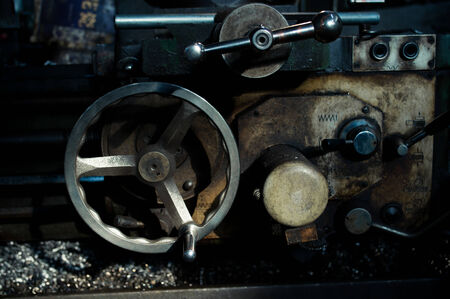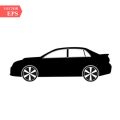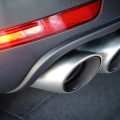1. Introduction
When it comes to your car’s braking system, two main types dominate the market: disc brakes and drum brakes. Understanding how these braking systems work and their differences can help you make informed decisions about maintenance, upgrades, and even the purchase of a new vehicle. In this article, we’ll break down the key distinctions between disc and drum brakes, their functions, and why this comparison matters for car owners.
What Are Disc Brakes?
Disc brakes use a flat, disc-shaped rotor that spins with the wheel. When you press the brake pedal, calipers squeeze brake pads against the rotor, creating friction and slowing the vehicle. These brakes are commonly used on the front wheels of most passenger cars and are often found on all four wheels in performance or modern vehicles.
What Are Drum Brakes?
Drum brakes feature a hollow drum that rotates with the wheel. Inside the drum, brake shoes press against the inner surface to create friction and slow down the vehicle. Drum brakes are generally used on the rear wheels of many vehicles due to their cost-effectiveness and durability for light braking needs.
Why This Comparison Matters
Choosing the right braking system affects your car’s safety, performance, and maintenance costs. While disc brakes are known for their superior stopping power and heat dissipation, drum brakes are valued for their lower cost and simpler maintenance. Understanding these differences helps car owners make better decisions about brake servicing and potential upgrades.
Quick Comparison: Disc Brakes vs. Drum Brakes
| Feature | Disc Brakes | Drum Brakes |
|---|---|---|
| Stopping Power | Better performance, especially in wet conditions | Less effective under heavy braking |
| Heat Dissipation | Dissipates heat quickly, reducing brake fade | Retains heat, making brake fade more likely |
| Maintenance | More expensive but easier to inspect and replace | Less expensive but harder to service |
| Common Use | Front wheels (or all four in high-performance cars) | Rear wheels in many vehicles |
Now that we have an overview of disc and drum brakes, let’s dive deeper into their individual mechanics and benefits in the upcoming sections.
2. How Disc Brakes Work
Disc brakes are a crucial component of modern vehicle braking systems. They provide reliable stopping power by using a combination of rotors, calipers, and brake pads. Understanding how these parts work together helps drivers appreciate why disc brakes are popular in most cars today.
Key Components of Disc Brakes
Disc brakes are made up of three main parts that work in harmony to slow down and stop a vehicle safely:
| Component | Function |
|---|---|
| Rotor | A metal disc attached to the wheel that rotates as the vehicle moves. |
| Caliper | Houses the brake pads and applies pressure to them, pressing them against the rotor. |
| Brake Pads | Friction materials that squeeze against the rotor to slow the vehicle. |
The Braking Process Explained
When you press the brake pedal, a series of actions take place:
Step 1: Hydraulic Pressure Is Applied
Pressing the brake pedal pushes brake fluid through the brake lines, creating hydraulic pressure on the caliper.
Step 2: Caliper Engages the Brake Pads
The caliper contains pistons that move outward, pressing the brake pads against the spinning rotor.
Step 3: Friction Slows the Rotor
As the brake pads clamp onto the rotor, friction is generated, reducing the wheel’s rotation and slowing the car.
Step 4: Heat Dissipation
The rotor and brake pads absorb heat during braking, but disc brakes are designed to dissipate this heat efficiently, preventing brake fade.
Why Disc Brakes Are Effective
Disc brakes are widely used today due to their superior stopping power and heat dissipation compared to drum brakes. Their open-air design allows for faster cooling, making them more efficient under heavy braking conditions.
![]()
3. How Drum Brakes Work
Drum brakes have been widely used in automobiles for decades, particularly on rear wheels. Although they have been largely replaced by disc brakes in modern vehicles, they are still common in budget-friendly and smaller cars. Understanding how drum brakes work can help car owners maintain their braking system more effectively.
Key Components of Drum Brakes
Drum brakes consist of several crucial parts that work together to slow or stop a vehicle. Below are the main components and their functions:
| Component | Description |
|---|---|
| Brake Drum | A metal drum that rotates with the wheel. When the brakes are applied, friction is created between the drum and the brake shoes, slowing down the wheel. |
| Brake Shoes | Curved friction materials inside the drum that press outward against the drums inner surface when brakes are applied, generating the necessary stopping force. |
| Wheel Cylinder | A hydraulic component that pushes the brake shoes outward when the brake pedal is pressed. It contains pistons that expand under hydraulic pressure. |
| Return Springs | Springs responsible for pulling the brake shoes back to their original position after braking force is released. |
| Adjuster Mechanism | A device that ensures the brake shoes maintain proper contact with the drum by compensating for wear over time. |
How Drum Brakes Function
When you press the brake pedal, hydraulic pressure is transmitted through the brake lines to the wheel cylinders inside the drum brakes. The wheel cylinder pushes the brake shoes outward, causing them to press against the rotating brake drum. This friction slows the wheel, bringing the vehicle to a stop.
Once the driver releases the brake pedal, the return springs pull the brake shoes back to their resting position, and the wheel can spin freely again. Over time, the drum and brake shoes wear down, requiring occasional adjustments or replacement.
Advantages of Drum Brakes
- Cost-effective compared to disc brakes
- Better performance as a parking brake
- Generally requires less frequent maintenance
Though drum brakes have their drawbacks, they are still widely used in many vehicles, particularly in rear-wheel applications where less braking force is required.
4. Key Differences: Performance, Durability, and Maintenance
Braking Efficiency
One of the most important factors when comparing disc brakes and drum brakes is braking efficiency. Disc brakes provide better stopping power due to their improved gripping force and faster response time. Since they have an exposed rotor and caliper system, they can engage and disengage quickly, providing better control over braking. On the other hand, drum brakes rely on internal brake shoes pressing against a drum, which takes slightly longer to respond and may not generate as much stopping power, especially under heavy loads or high speeds.
Heat Dissipation
Heat buildup is a critical aspect of braking performance. When brakes are engaged, friction generates heat, and if this heat isnt dissipated efficiently, it can lead to brake fade, reducing braking effectiveness. Disc brakes excel in heat dissipation because of their open design, which allows airflow to cool the rotor faster. Drum brakes, however, enclose the brake components within a drum, trapping more heat and making them more susceptible to overheating under prolonged use.
Maintenance Requirements
Both brake types require regular maintenance, but disc brakes tend to be easier to service. Since their components are exposed, checking and replacing brake pads is relatively simple. In contrast, drum brakes require removing the entire drum assembly to access the brake shoes, making the process more complex and time-consuming. Additionally, drum brakes have more moving parts, increasing the likelihood of parts wearing out and needing replacement.
Durability
Durability is another key consideration for car owners. While disc brakes generally last longer due to better heat management and even wear, drum brakes are known for their longevity in certain applications, such as rear-wheel braking systems in everyday passenger vehicles. Since most braking force is applied to the front wheels, rear drum brakes tend to last longer and require less frequent replacements. However, for high-performance or heavy-duty use, disc brakes outshine drum brakes in durability.
Comparison Table
| Feature | Disc Brakes | Drum Brakes |
|---|---|---|
| Braking Efficiency | Provides better stopping power | Less effective at high speeds or under heavy loads |
| Heat Dissipation | Efficient heat dissipation, reducing brake fade | Less efficient, prone to overheating |
| Maintenance | Easier to inspect and replace components | More complex maintenance and replacement |
| Durability | Long-lasting with proper care | Durable but prone to heat-related issues |
Both disc and drum brakes have their advantages and disadvantages, with disc brakes excelling in braking power and heat management, while drum brakes offer simplicity and durability in certain applications. Understanding these factors can help car owners make informed decisions about their vehicles braking system.
5. Pros and Cons for Everyday Drivers
Understanding the Benefits and Drawbacks
When it comes to daily driving, the choice between disc brakes and drum brakes can make a difference in performance, cost, and longevity. Let’s break down the pros and cons of each system to help you understand which might be better suited for your vehicle.
Disc Brakes: Pros and Cons
Advantages
- Better Performance in Wet Conditions: Disc brakes dissipate water quickly, providing more reliable braking in rainy weather.
- Improved Heat Dissipation: The open design of disc brakes helps them cool down faster, reducing the risk of brake fade.
- Better Stopping Power: They generally provide more consistent and powerful braking, improving driving safety.
- Easier Maintenance: Replacing brake pads is simpler and quicker compared to drum brake shoes.
Disadvantages
- Higher Cost: Disc brakes tend to be more expensive to produce and repair.
- Faster Wear: Brake pads in disc brakes wear out faster, leading to more frequent replacements.
- More Complex Components: Additional parts, such as calipers and rotors, mean there are more things that can wear out over time.
Drum Brakes: Pros and Cons
Advantages
- Lower Cost: Drum brakes are typically cheaper to manufacture and replace.
- Longer Lifespan: The friction surface tends to wear out more slowly than disc brake components.
- Stronger Parking Brake Functionality: Drum brakes integrate well with parking brake mechanisms, making them more effective for holding a vehicle in place when parked.
Disadvantages
- Lower Stopping Power: Drum brakes are less effective at high speeds and in emergency braking situations.
- Poor Heat Dissipation: The enclosed design causes heat buildup, reduces braking efficiency, and increases the risk of brake fade.
- More Difficult Maintenance: Drum brake components are harder to access and replace compared to disc brakes.
Comparison Table: Disc Brakes vs. Drum Brakes
| Category | Disc Brakes | Drum Brakes |
|---|---|---|
| Cost | Higher | Lower |
| Stopping Power | Better | Weaker |
| Heat Dissipation | Faster | Slower |
| Maintenance | Easier | More Difficult |
| Longevity | Wears Faster | Lasts Longer |
| Wet Weather Performance | Superior | Less Effective |
For everyday drivers, understanding these pros and cons can help determine whether the extra cost of disc brakes is worth it for better performance or if the affordability of drum brakes makes more sense for your vehicle.
6. Conclusion: Which One is Best for You?
Choosing between disc brakes and drum brakes depends on several factors, such as your driving habits, budget, and the type of vehicle you drive. Both braking systems have their pros and cons, so understanding their differences can help you make the right decision.
Considering Your Driving Needs
If you drive in areas with heavy traffic, frequent stop-and-go situations, or mountainous terrain, disc brakes are a better option. Their superior heat dissipation and better stopping power provide a safer and more reliable braking experience. On the other hand, if you mostly drive at moderate speeds in normal conditions, drum brakes can still perform well and meet your needs.
Budget and Maintenance Costs
Disc brakes tend to be more expensive to install and replace, but they require less frequent maintenance. Drum brakes are often found on budget-friendly or economy vehicles because they cost less to manufacture and repair. If you are looking for a cost-effective solution and don’t mind more frequent maintenance, drum brakes can be a good option.
Vehicle Type Matters
The choice between disc and drum brakes also depends on the type of vehicle you drive. High-performance sports cars, large SUVs, and trucks often come equipped with disc brakes for better stopping power. Meanwhile, smaller economy cars may use drum brakes in the rear to keep costs and weight down while still providing adequate braking performance.
Comparison Table
| Factor | Disc Brakes | Drum Brakes |
|---|---|---|
| Braking Performance | Better stopping power and heat dissipation | Less effective in high-heat conditions |
| Cost | More expensive to install and replace | Cheaper to manufacture and maintain |
| Maintenance | Requires less frequent maintenance | Needs more regular servicing |
| Best Suited For | High-performance vehicles, SUVs, trucks | Budget-friendly economy cars |
Making the Right Choice
Ultimately, the best braking system for your car comes down to your personal needs. If performance and safety are your top priorities, disc brakes are the way to go. However, if you are looking for an affordable and practical braking solution, drum brakes still have their place. Evaluating your driving conditions and budget will help you determine which option suits your vehicle the best.


